Introduction to the Port
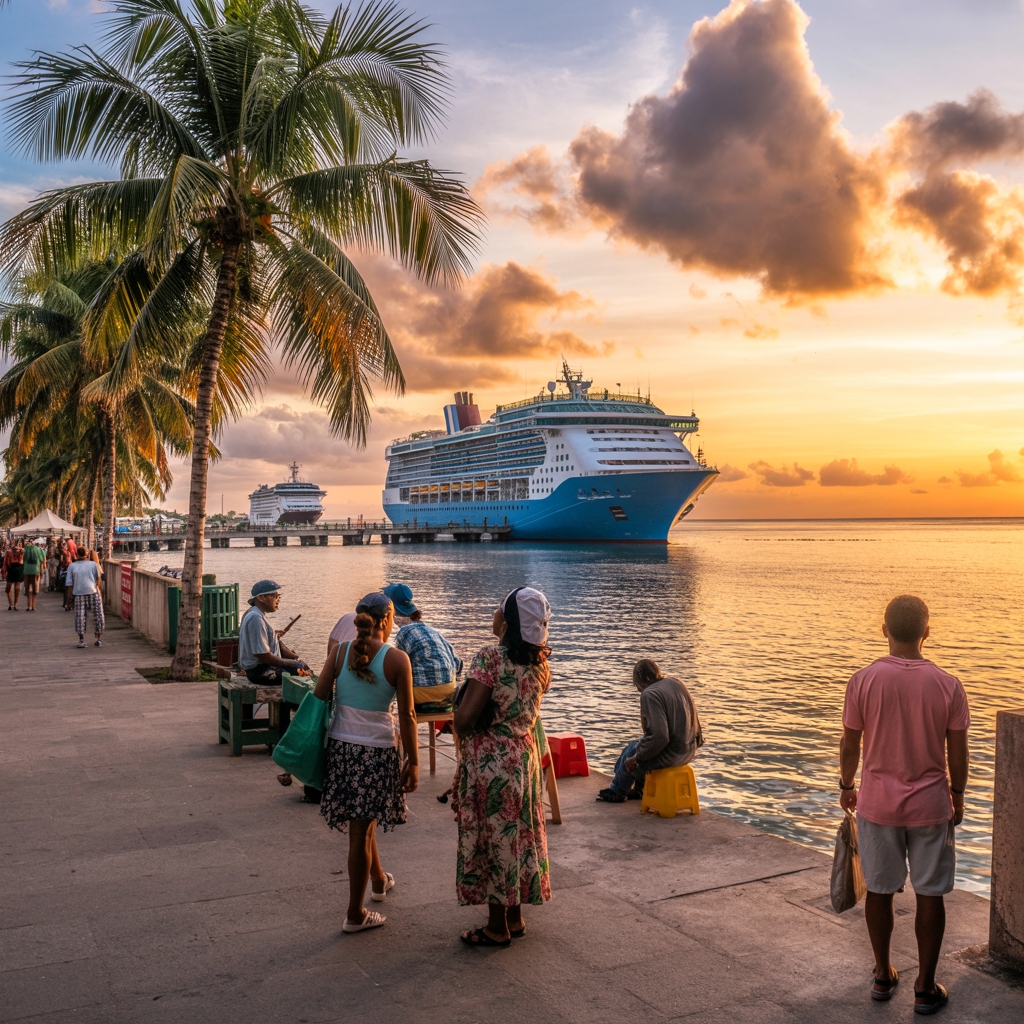
Welcome to Quelimane, where the scent of tropical blooms mingles with the salty breeze drifting up from the Rio dos Bons Sinais – and yes, that really does mean “River of Good Signs,” which feels like a promising start to any port journey.
For other Mozambique Cruise destinations check out our Mozambique Cruise Ship Port Guide page.
Picture yourself stepping off your cruise ship onto a 230-meter quay where the gentle lapping of river water creates a surprisingly peaceful soundtrack, quite different from the crashing waves you might expect at an ocean port. The palm trees sway just beyond the dock area, and you’ll notice how this riverine setting feels more intimate than those massive coastal terminals where you can barely see the shoreline.
This isn’t your typical mega-port outing, and honestly, that’s exactly what makes Quelimane special – though it does mean you’ll want to know a few insider details before you dock.
The port sits about 20 kilometers inland from the Indian Ocean, which explains why your ship had to navigate those winding river channels to get here, and why the whole approach felt like sailing into a secret garden rather than pulling up to a bustling commercial hub.
I’m going to walk you through everything from the practical stuff, like how those tricky tidal schedules might affect your shore excursions, to the cultural gems waiting in this historic Portuguese trading post that most cruise passengers have never even heard of.
Map of Quelimane Cruise Ship Port
Why Cruise From this Port?
Choosing Quelimane as your cruise departure point means you’re basically opting for the road less traveled, which in this case happens to be a river less sailed.
- Authentic cultural immersion – You’ll encounter real Mozambican life without the tourist bubble that surrounds bigger ports.
- Unique riverine cruising – That 20-kilometer journey down the Rio dos Bons Sinais provides dramatic scenery you simply can’t get at ocean ports.
- Gateway to landlocked excursions – Perfect launching pad for exploring Malawi and Zambia without the usual logistics headaches.
- Intimate ship journey – Smaller vessels mean you’ll actually get to know your fellow passengers instead of just bumping into them at buffets.
- Cost advantages – Regional proximity keeps your pre- and post-cruise accommodation expenses delightfully reasonable.
- Historical significance – You’re literally following the same route Vasco da Gama used, though hopefully with better food and Wi-Fi.
“Most cruise passengers think they need to start from Durban or Cape Town to see real Africa, but Quelimane provides something those mega-ports simply can’t – authenticity without compromise,” explains Maria Santos, Senior Port Development Coordinator for Mozambique’s Cruise Initiative.
“When you depart from here, you’re not just taking a cruise, you’re continuing a 500-year tradition of maritime exploration.”
Cruise Terminal(s) Overview
| Terminal | Facilities | Distance to City Centre | Walkable | Luggage Storage | WiFi Availability (Yes/No) |
|---|---|---|---|---|---|
| Main Multi-Purpose Berth | Medical facilities, customs office, warehousing, basic passenger processing areas | 2.5 km | No | Limited warehouse space available | No |
Let me be completely honest with you – calling Quelimane’s cruise setup a “terminal” is being pretty generous. What you’re actually getting is a working cargo port that occasionally handles cruise passengers, kind of like your uncle’s garage that sometimes doubles as a wedding venue.
The main berth facility does its job, but don’t expect the gleaming passenger lounges you’d find in Barcelona or Fort Lauderdale. Think more “functional concrete pier with a side of industrial charm.” The medical facilities are there, which is reassuring, and the customs office means you won’t be standing around wondering where to clear immigration. But air conditioning, comfortable seating areas, and gift shops selling overpriced port merchandise? Yeah, that’s not happening here.
The warehousing situation is interesting because technically there’s storage space, but it’s primarily designed for coffee beans and cashew nuts, not your collection of vintage suitcases. If you need to stash luggage temporarily, you’ll want to coordinate with your cruise line or local agent ahead of time. Don’t just show up expecting a neat row of luggage lockers like you’re at the train station.
As for WiFi, well, this is where managing expectations becomes essential. The port focuses on moving cargo efficiently, not keeping cruise passengers connected to Instagram. You’ll want to sort out local data plans or prepare for some delightful digital detox time while you’re waiting to board.
The 2.5-kilometer distance to downtown might not sound like much, but factor in tropical heat, potentially unpaved sections, and rolling suitcases that weren’t designed for exploration, and walking becomes less appealing. Most cruise lines arrange transport specifically because they know the infrastructure reality here.
Transport Options to the Port (From City Centre)
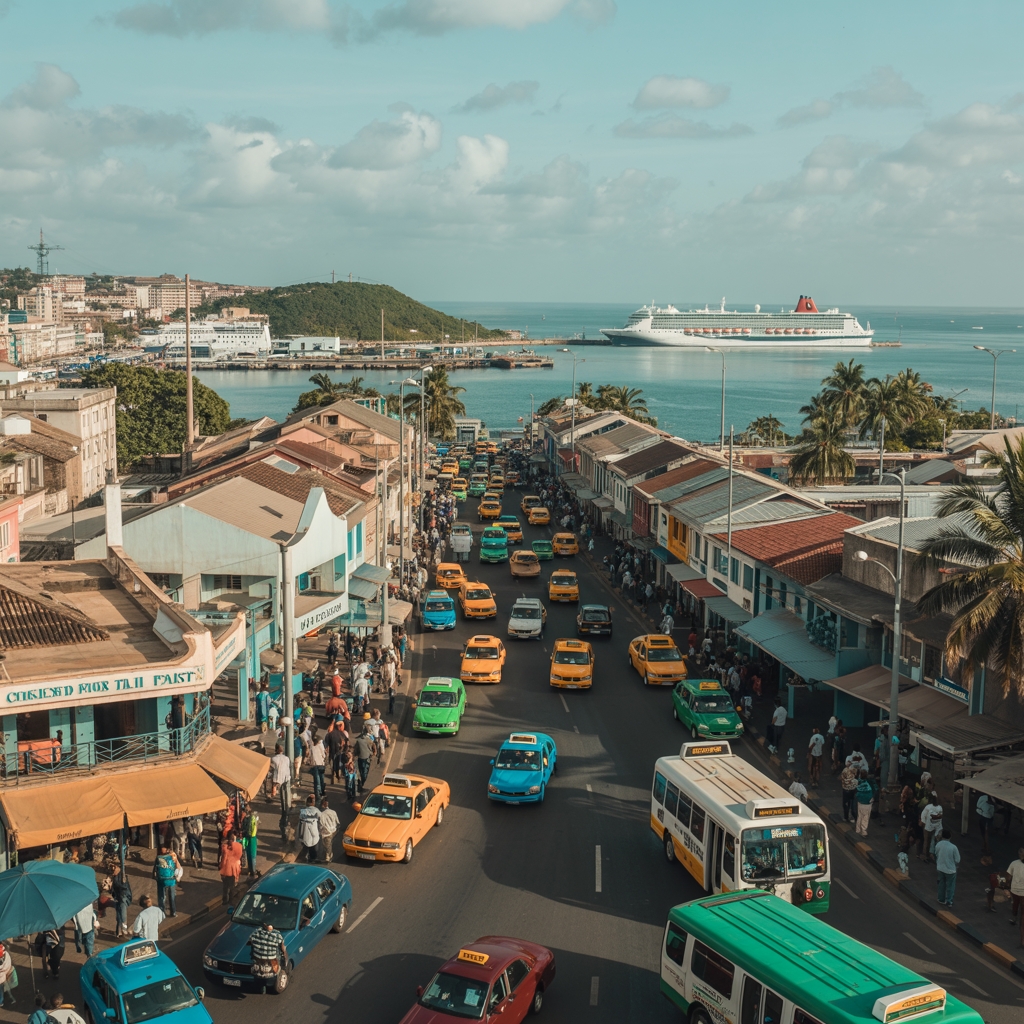
Getting from downtown Quelimane to the port involves traversing a city where ride-hailing apps haven’t quite made their debut yet, so you’re looking at good old-fashioned transportation methods that require a bit more planning than tapping your phone.
| Transport Option | Cost Estimate (€/$) | Travel Time | Frequency | How to Book/Use |
|---|---|---|---|---|
| Metered Taxi | €10-15 ($12-18) | 15-20 minutes | On-demand | Flag down near hotels/markets, negotiate fare upfront |
| Public Chapa (Minibus) | €0.50-1 ($0.60-1.20) | 25-35 minutes | Every 30-60 minutes | Board at Central Market, look for “Porto” signs |
| Hotel Transfer | €30-60 ($35-70) | 15-20 minutes | Pre-arranged only | Book 24-48 hours ahead through VIP Grand, Hotel Chuabo, or Milinia |
| Walking | Free | 35-45 minutes | Continuous | Use GPS navigation, avoid after dark |
| Private Car | €5/day parking ($6/day) | 10-15 minutes driving | Self-determined | Drive to port lot, pay 150 MZN daily rate |
How to Get from the Airport to the Cruise Port
Getting from Quelimane Airport to your cruise ship feels a bit like guiding a treasure map, except the treasure is your floating hotel and you’re probably dragging way too much luggage behind you.
| Transport Option | Cost Estimate (€/$) | Travel Time | How to Book | Pro Tips |
|---|---|---|---|---|
| Private Transfer | €40-80 ($50-100) | 15-30 minutes | Book through cruise line or Priceline Cruises 48+ hours ahead | All-inclusive pricing, air conditioning, door-to-door service |
| Shared Shuttle | €15-30 ($20-40) | 20-40 minutes | Arrange via cruise operator or third-party platforms | Fixed departure times, confirm luggage allowance |
| Airport Taxi | €25-50 ($30-65) | 15-30 minutes | Available at arrivals, negotiate fare first | Bring cash in Mozambican metical, confirm rate before getting in |
| Hotel Transfer | €20-60 ($25-75) | 20-35 minutes | Request through hotel concierge upon check-in | Works if staying overnight, uses local transport partnerships |
Parking and Accessibility at the Port
Parking at Quelimane’s cruise port is honestly a bit of a mystery since there’s no clear information about dedicated facilities, which means you’re basically playing port parking roulette.
- No confirmed parking facilities – The port doesn’t have documented cruise terminal parking, so don’t count on rolling up and finding a convenient spot.
- Consider staying overnight instead – Many travelers book a hotel near the port the night before and use their transfer services rather than dealing with parking headaches.
- Accessibility features unknown – If you need disabled parking or shuttle services, contact the port authority directly since these details aren’t publicly available.
- Security and pricing unclear – Without verified info on surveillance, rates, or safety measures, parking your car here feels like a gamble.
- Alternative transport recommended – Given the parking uncertainty, taxis, hotel transfers, or ride-sharing might save you more stress than driving yourself.
Common Mistakes First‑Time Cruisers Make at the port
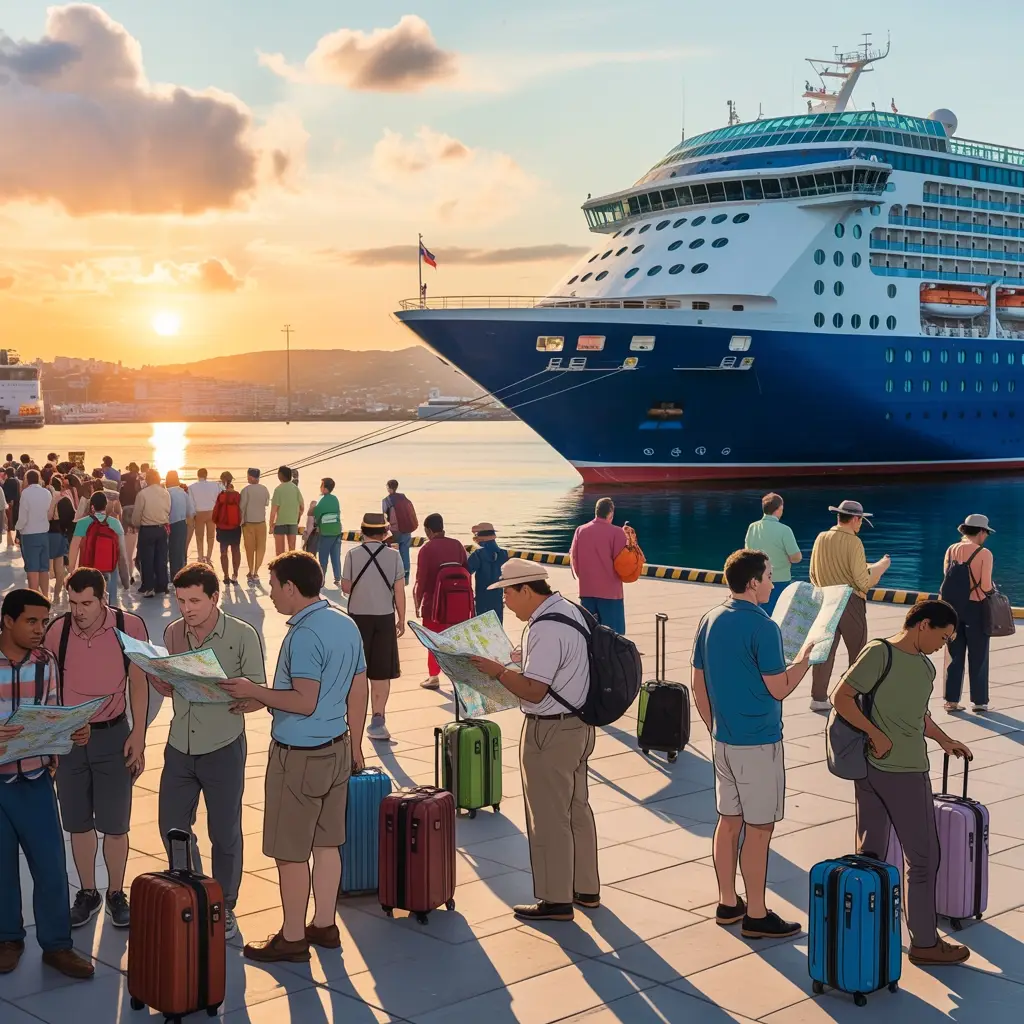
First-time cruisers at Quelimane often stumble into avoidable traps that can turn their African journey into a comedy of errors.
- Forgetting malaria pills – This isn’t the Caribbean, folks, so pack your prophylaxis because mosquitoes here don’t mess around.
- Skipping the Portuguese basics – Learning “obrigado” (thank you) and “quanto custa” (how much) will save you from awkward pointing sessions at markets.
- Trusting cruise-line exchange rates – Those onboard currency exchanges are highway robbery, so hit up a local bank instead.
- Wearing flip-flops to mangrove tours – Your feet will thank you for closed-toe shoes when you’re slogging through swampy terrain.
- Assuming everyone speaks English – Download a translation app because English isn’t as common as you’d hope outside tourist areas.
- Carrying wads of cash – Flashing money makes you a walking target, so use cards when possible and keep bills hidden.
- Booking identical shore tours – Why pay cruise-line prices when local operators offer the same trip for half the cost with better guides?
- Ignoring tide schedules – Water activities depend on tides here, so check schedules or you might find yourself staring at mudflats instead of swimming.
See what’s on offer from the Port of Inhambane for a different Mozambique Cruise destination.
Things to do Near The Port
Quelimane’s port sits right in the heart of town, which means you can practically roll out of your cabin and into authentic Mozambican life.
- Central Market – Fresh seafood, tropical fruits, and handwoven crafts sprawl across this bustling maze where haggling is an art form.
- Quelimane Cathedral – Those 19th-century stained glass windows filter sunlight into rainbow patterns that’ll make your Instagram followers weep with envy.
- Old Fort Museum – Colonial-era stones hold centuries of stories, plus the exhibits give you context for everything else you’ll see in town.
- Governor’s Palace – Neoclassical columns and Portuguese elegance remind you that this sleepy port once ruled vast trading empires.
- Craft Stalls – Wooden carvings and woven baskets line the streets, perfect for grabbing gifts without venturing far from your floating hotel.
- Fresh Seafood Vendors – Grilled prawns sizzle on corner stalls, filling the air with smoky aromas that’ll have you drooling before lunch.
- Mercado Central de Quelimane – Textiles, souvenirs, and local snacks packed into covered stalls where you can practice your Portuguese numbers.
Short Walks Close to the Port
These gentle strolls let you soak up Quelimane’s charm without breaking a sweat, though I’d definitely recommend sturdy shoes since the sidewalks have a mind of their own.
| Walk Name | Start Point | Distance | Time Needed | Highlights |
|---|---|---|---|---|
| City Center Heritage Walk | Port entrance | 1.2 km | 25 minutes | Workers’ Square, colonial buildings, Nossa Senhora do Livramento Church |
| Riverside Exploration Path | Port waterfront | 800 m | 20 minutes | Fishermen’s docks, mangrove views, traditional dhow landing sites |
| Cultural Quarter Stroll | Avenida Eduardo Mondlane | 1.5 km | 30 minutes | Portuguese customs house ruins, artisan cooperative, WWII memorial |
| Green Spaces Circuit | Municipal market area | 900 m | 22 minutes | Jardim Público park, riverside picnic spots, soccer fields |
Dining and Shops Within Walking Distance of the Port
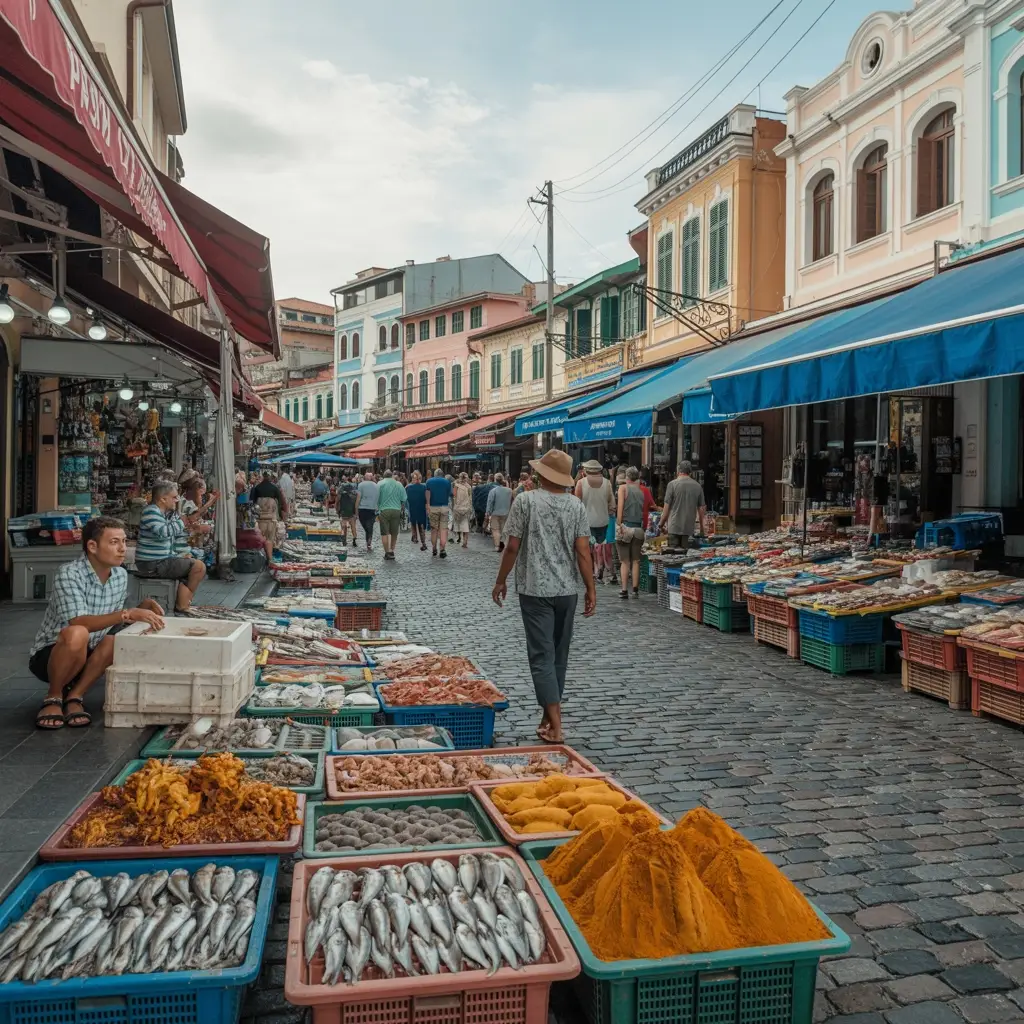
Your dining options near the port are pretty limited, but you’ll find enough spots to grab a decent meal before heading back to your ship.
- Pub Restaurante Xeque Mate – About a 15-minute walk toward downtown, serves international dishes with a 3.9/5 rating, though don’t expect anything too fancy.
- Frango à Rony Take Away – Your best bet for authentic local cuisine, especially their grilled chicken with peri-peri sauce, rated 4.3/5 and budget-friendly.
- Cafe Nara – Right on Ave 7 de Setembro near the cathedral, provides pizza and casual international fare with outdoor seating, perfect for a quick coffee break.
- Hotel restaurants near the port – Usually within a 10-minute walk, most provide buffet-style dining with mixed local and international options, though quality can be hit or miss.
- Shopping reality check – There’s basically no duty-free shopping or fancy retail near the port, just small hotel gift shops and occasional craft vendors, so manage your souvenir expectations accordingly.
Emergency Contacts at the Port
While nobody wants to think about emergencies during their cruise vacation, it’s smart to know who to call if something goes wrong.
- INTRASMAR (Maritime Transport Institute) – The main port authority for Zambézia Province, contact through Radio Mozambique or the local port administration office.
- Local fire department – They’ve handled boat fires here before, including a serious incident in 2017, so they know maritime emergencies.
- Medical emergencies – Head to the clinics in Quelimane, which have expertise treating maritime accident victims and can stabilize patients before hospital transfer.
- Coast Guard services – Available for maritime rescues, though you’ll need to go through the port administration to reach them.
- Port medical staff – Located right at the terminal for initial triage and first aid before any hospital transfers.
- Tugboat emergency support – Four tugboats equipped with firefighting gear are stationed here, following protocols established after the 2025 Nacala incident.
Environmental Initiatives at the Port
Beyond safety protocols, Quelimane’s port has embraced impressive environmental initiatives that’ll catch your attention as you disembark.
You’ll witness 200+ hectares of restored mangroves that reduce storm surge intensity by 30-40% while supporting local communities. These natural barriers have increased fish stocks by 25% in Rio Bons Sinais estuary and created 120+ eco-tourism jobs.
The port’s mangrove restoration involves 500+ volunteers and generates $50,000+ yearly through honey production.
You’re experiencing part of Mozambique’s Great Blue Wall initiative, where carbon sequestration offsets 5% of port emissions while quarterly assessments guarantee water quality compliance.
Brief History of the Port
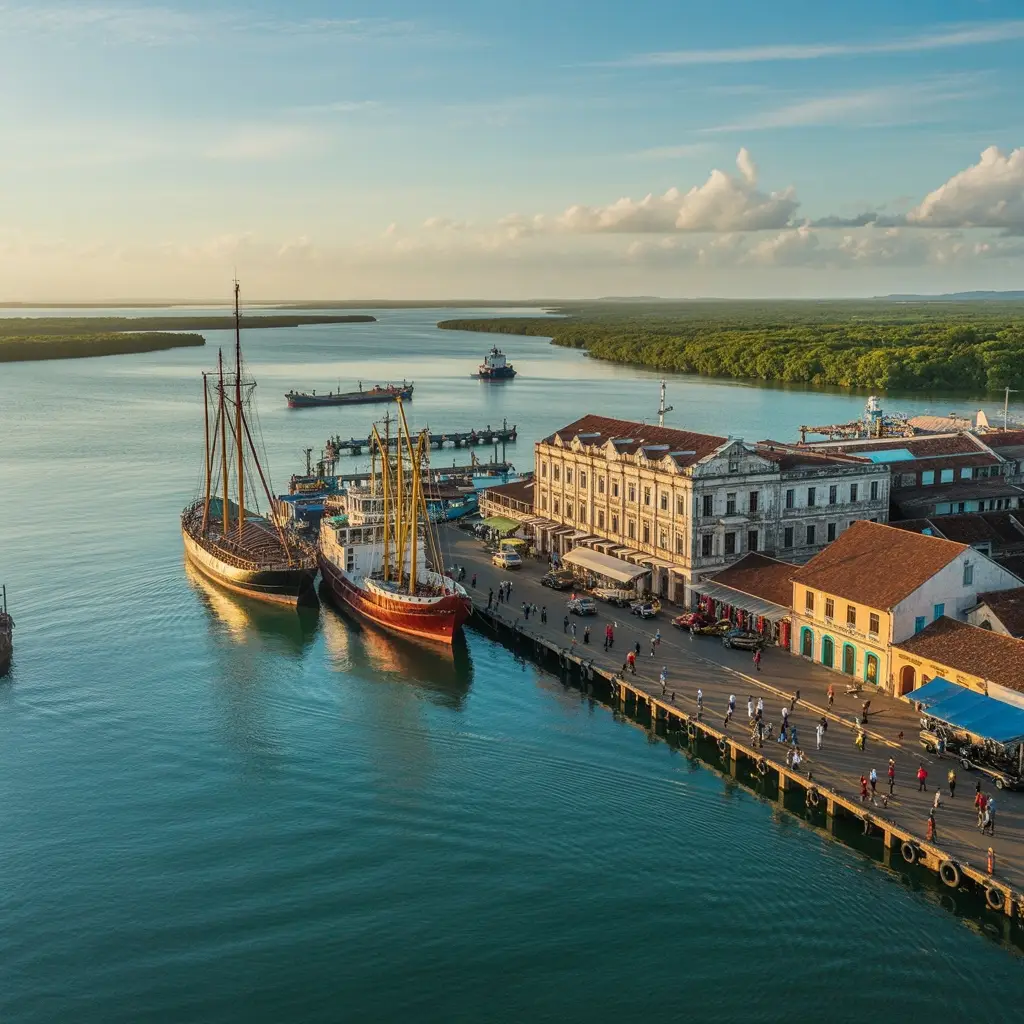
Looking back through time, Quelimane’s remarkable port tells a story that spans over five centuries of maritime commerce and cultural exchange.
You’ll uncover it began as a Swahili trade center before Portuguese traders established an ivory post in 1544. The port officially became a town in 1761, serving as a vital slave export hub until 1812.
Throughout the 19th century, it transitioned to agricultural exports including sisal, tea, and coconut.
After Mozambique’s 1975 independence, you’ll find the port modernized with container facilities while preserving its historic Portuguese architecture under current management by Administração dos Portos de Moçambique.
Frequently Asked Questions
What Vaccines Are Required for Cruise Passengers Visiting Quelimane?
You’ll need Yellow Fever vaccination if arriving from risk countries. Polio booster’s recommended per WHO guidelines. Keep routine immunizations current. Your cruise line may enforce additional requirements beyond Mozambique’s government mandates.
Can I USe US Dollars at Local Markets Near the Port?
You can use US dollars at local markets near the port, though vendors prefer meticais for small purchases. Carry small USD bills and expect less favorable exchange rates from market vendors.
What Is the Tipping Etiquette for Local Tour Guides in Mozambique?
You should tip general tour guides USD 4-5 daily, while specialized safari guides earn up to USD 20. Use cash in USD or Meticais, give tips directly or through communal boxes at tour’s end.
Are There ATMS That Accept International Cards Near the Cruise Terminal?
Yes, you’ll find several ATMs accepting international Visa/Mastercard near the terminal. Millennium BIM’s 24/7 ATM sits 1.2km away, while Standard Bank’s branch ATM is just 800 meters west of the port.
What Portuguese Phrases Should I Know for Basic Communication With Locals?
You’ll need “Bom dia” for morning greetings, “Obrigado/a” for thanks, “Quanto custa?” for prices, “Onde está?” for directions, and “Eu não falo português” to indicate language barriers with locals.
Thinking about something different? Check out the cruises leaving from Maputo Cruise Ship Port.
